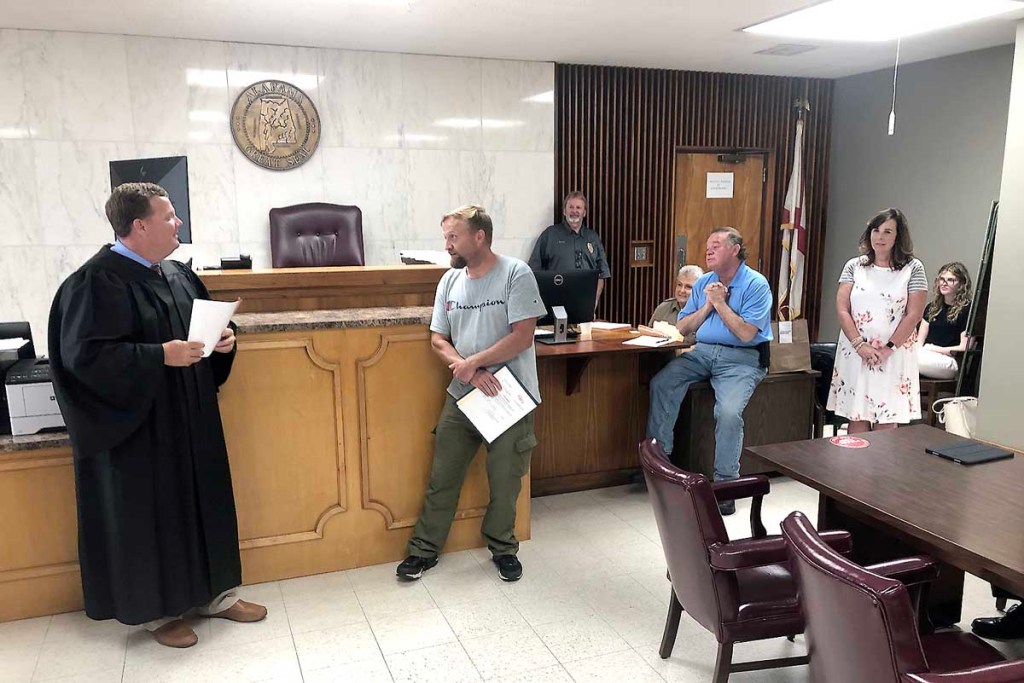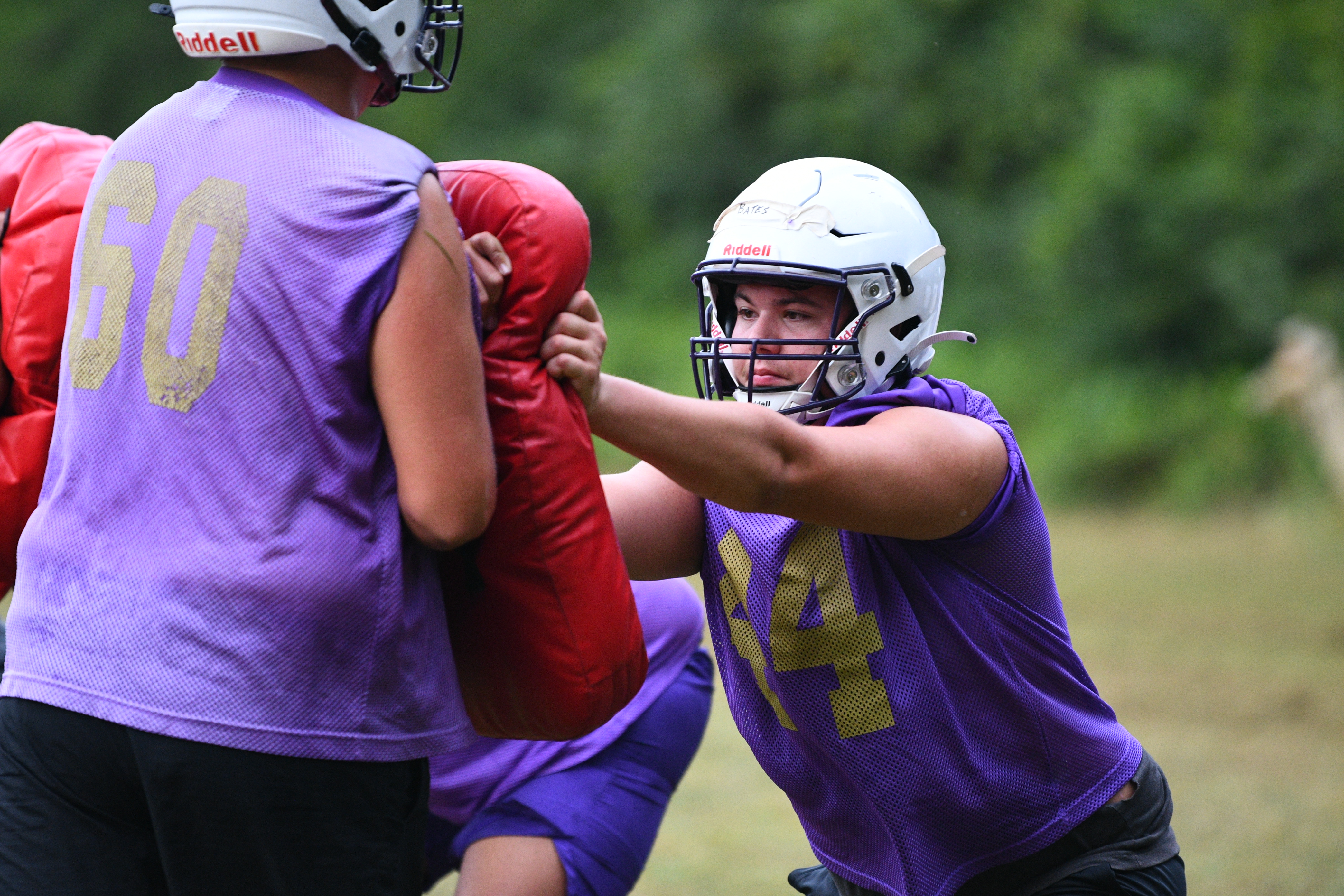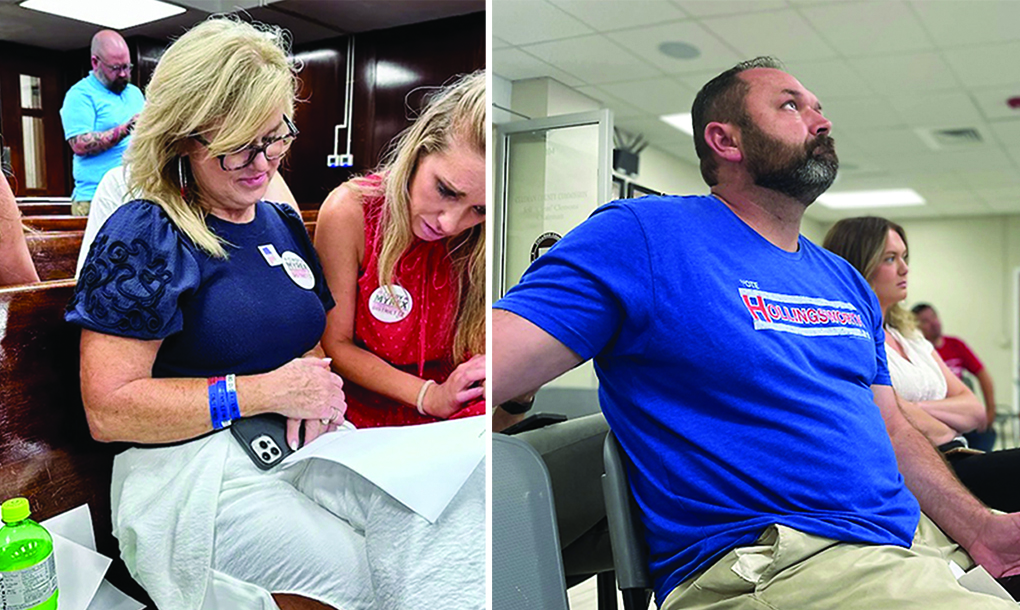‘They’re worth the time’
Published 5:30 am Saturday, August 7, 2021

- District Judge Chad Floyd, left, congratulates Brandon Hill on successfully completing the 12-month journey of self-investment required under the criminal diversion program of the Cullman County Drug Court. Hill is among the approximate 40 local people who move through the program each year, all of whom seek to wipe away their drug possession prison sentences through clean screenings, non-medical therapy, accountability, and community service.
Going to jail or keeping your freedom: It doesn’t seem like a hard choice. But for those who’ve navigated the Cullman County Drug Court Program to success, freedom has been an option that’s well earned.
Begun in 2008 and guided until recently by former district judges Greg Nicholas (now the presiding judge over Alabama’s 32nd Judicial Circuit) and retired district judge Kim Chaney, drug court has long been a diversionary means of helping accused users work their way toward a life that’s free from drug use, substance abuse, and further encounters with law enforcement.
Trending
Now under the guidance of district judge Chad Floyd, the drug court is incorporating new ideas to sit alongside the methods that’ve made what his predecessors started one of the local legal system’s biggest success stories.
Floyd is the first to champion the success of the participants themselves. “In my time with the drug court, I’ve noticed that some of the people who come through our program may have issues with low self-esteem; a background where nobody really taught them to have a sense of self worth,” explained Floyd, moments before taking the bench and meeting face-to-face with program participants — all accused felons facing possible prison time — at a recent drug court session.
“I want to make everybody in there feel that they do have self worth. They’re worth my time, and they’re worth the time of everyone else who’s in that room. I want to see them succeed and move beyond the choices that got them into my court. I want to see them out and about doing well in the future — not back in my courtroom.”
Even with a prison sentence looming for anyone who fails out of the program, that’s easier said than done. At a minimum, the program takes a full year to complete, and it requires intensive commitment on the part of the accused for that full duration. Participants must pass random drug screenings that can occur at any time, attend a total of 48 Intensive Outpatient (IOP) therapy sessions, follow an individually-tailored, non-medical rehabilitation program — and, crucially, pay their own way.
Adding no cost for taxpayers, Cullman County Drug Court is fully funded by the $175 per-month payments that each of its participants must make. “I call it your financial commitment to our program,” explained Floyd. “This program is self-funded; it works because they make their payments. We don’t just take direct tax dollars to do this. That’s always been the way it’s worked.”
One addition Floyd has brought to the program since taking the bench in March of 2020 is a new focus on community service. Drug court participants must complete 52 hours of community service — an hour each week — for the full year that they’re in the program.
Trending
“Anytime you take over a successful program, you want to examine ways that you can contribute,” said Floyd. “I thought that the program, and the community, could benefit from the addition of community service hours. You aren’t going to graduate from our program until you’ve finished that commitment.”
It’s vital to note that not everyone qualifies for drug court. Typically, the criminal charge that triggers a drug court referral is felony possession of a controlled substance. But a candidate with violent felony offenses, trafficking charges, or other serious criminal accusations isn’t a candidate at all, said Floyd.
“It’s not for violent criminals. It’s not for someone who’s injured another party or who’s been charged with manufacturing or trafficking methamphetamine. Every single person we’ve got in here right now, and since I’ve been taking pleas — the charge that they’ve pleaded to has been a possession charge. I certainly don’t want to minimize the seriousness of a possession charge. But it’s distinct from charges that entail harm to another party. If you’re facing those kinds of charges, you’re not eligible.”
Local nonprofit outreach The Link of Cullman County is the community service liaison for drug court participants, and it provides a nurturing setting where they can feel like they’re part of more than just the legals system, according to director of neighbor relations Julie Hall.
“Our environment is so encouraging; they really have an opportunity to experience a level of compassion and love in way that’s different from what they expect in a courtroom before a judge,” Hall said.
“When they’re in court, they’re in trouble, and there’s some expected tension that goes with that. When they come into our environment, they can really be more comfortable, and feel that they don’t have to jump through those same kind of formal hoops.”
Participants help prepare and serve meals at The Link’s outreach dinners, monthly events sponsored by local churches and volunteers. The dinners often draw 100 or more people, and drug court participants “can come and serve their community, and then sit down and have a meal with the people they’ve served,” Hall said. “It involves them from both sides. It’s for anyone in the community who wants to come and have a meal together — and that includes them.”
Does drug court work? Without question, says recent graduate Brandon Hill. “It’s helped me,” said Hill just outside the courtroom, fresh from receiving his final completion certificate. “I was facing time in jail; some really bad things. It’s hard to put into words, but it’s a relief to be graduating.”
Floyd is more effusive in praising those who’ve earned their way forward. “Mr. Hill has been an exemplary participant in our program,” he said “He’s had no sanctions the entire time he’s been in here. He got in, he knocked his community service out, he made all of his payments in a timely manner, and he’s not had the first positive drug screen. I don’t think we’ll ever see him in our system again — and I mean that in a good way. He’s exactly the success story that you hope for from a program like ours.”
The numbers show that drug court has been a difference maker for those who’ve put in the hard work.
“Among the people who fail out of this program — in other words, those who end up in prison instead of finishing — approximately 49 percent of them are re-arrested on drug charges within three years,” said Floyd. “But for an individual who has graduated from the program, that same statistic is just a little more than 3 percent. It’s a shocking statistic to me.
“There’s no doubt that this program can help somebody achieve their sobriety. The bigger question is, can we help them maintain it once they’ve graduated? For that year that they’re in our program, they’re coming to see me every two weeks, they’re drug testing, they’re around all these influential figures who are cheering them on. But the real test comes when we take our hands off the wheel. And if you look back at the full history of this program, we’ve seen a 97 percent success rate, looking three years out from the time that each participant graduated”
The stakes are high for those who fail, because one condition of entering the program is to plead guilty from the very beginning — and then have that sentence held in abeyance pending your completion 12 months later.
“These folks have made quite a commitment to just be in this program,” said Floyd. “It’s easy to think, ‘Well, they’re just doing it because they want it off their record; they don’t want do go to prison on this charge.’ But the fact is, it’s a lot of work. It’d be a lot easier to walk across the hall, plead guilty, take your felony and move on. But these folks — I like to think they’re playing the long game to invest in themselves and better their own lives.
“Judge Chaney and Nicholas both deserve a lot of praise for having the vision and seeing the need in our community to start such a program back in 2008,” he added. “I just hope I can continue to do it justice by being responsive; by assessing how we can help the participants — while also helping our community.”






